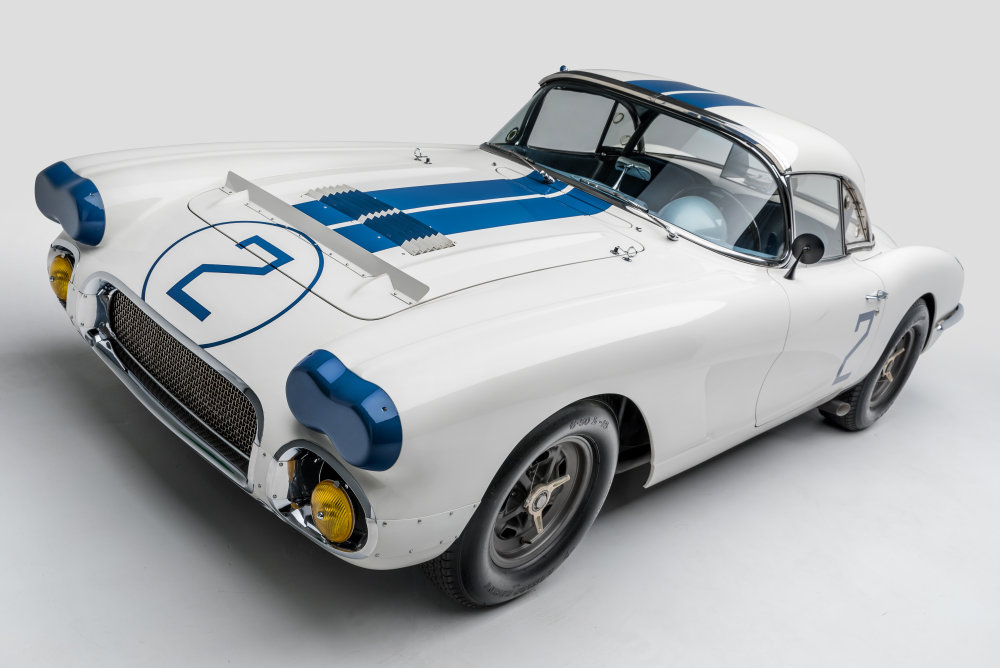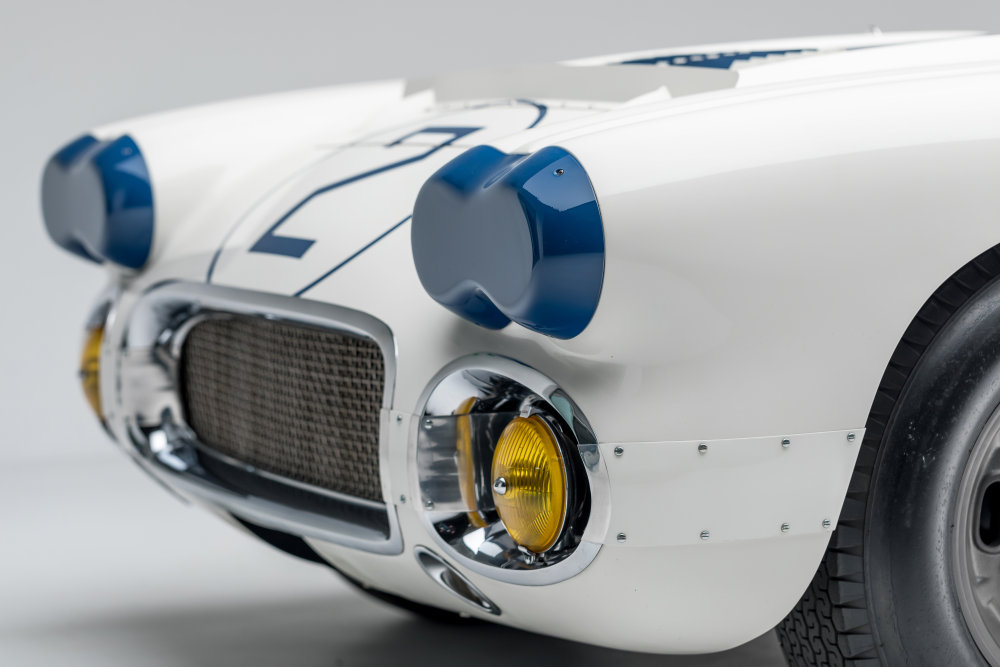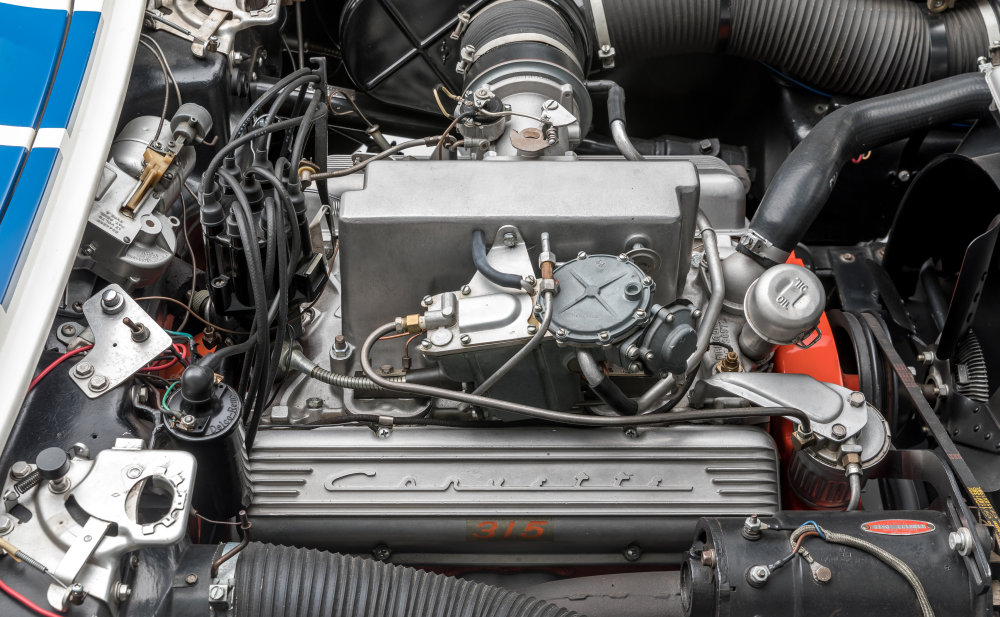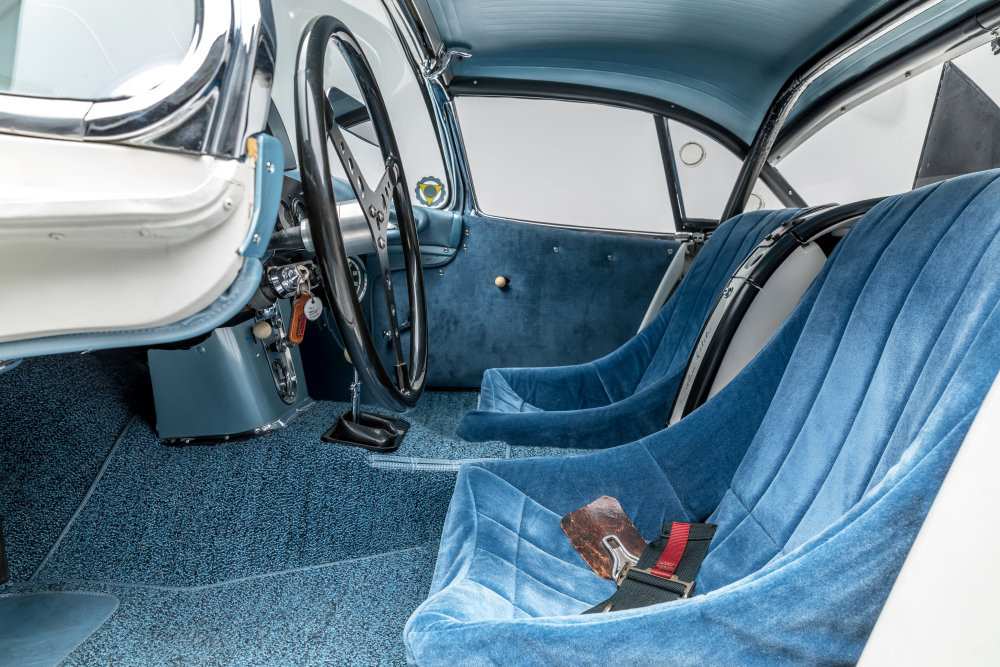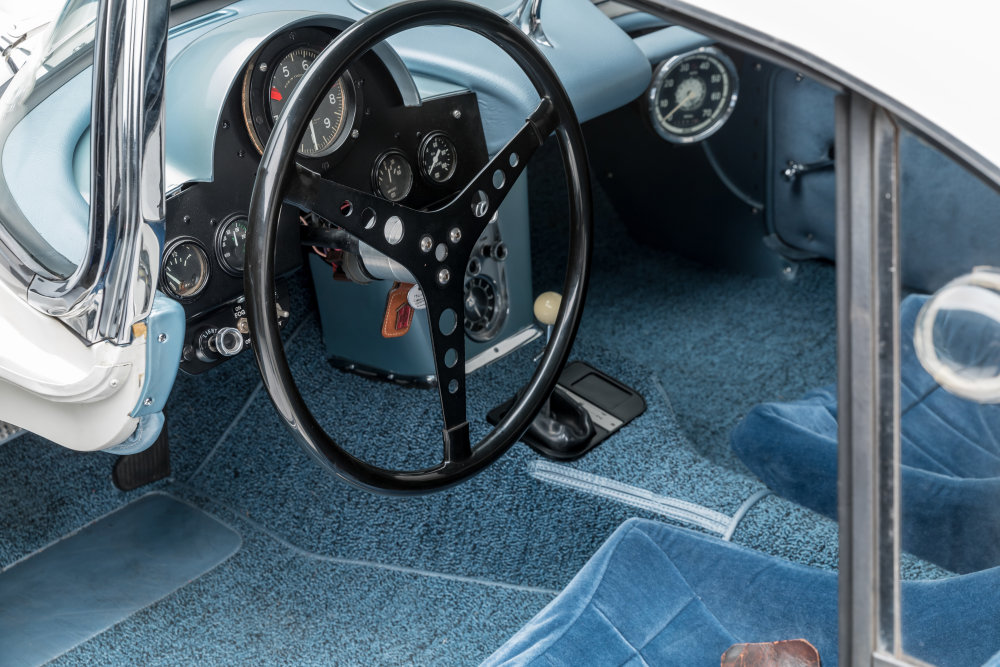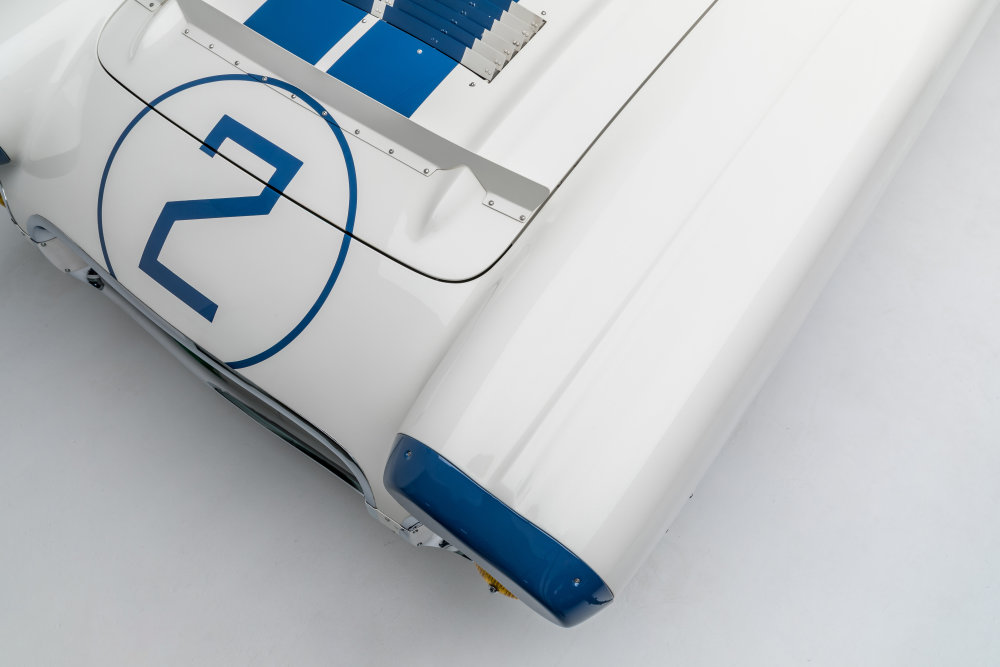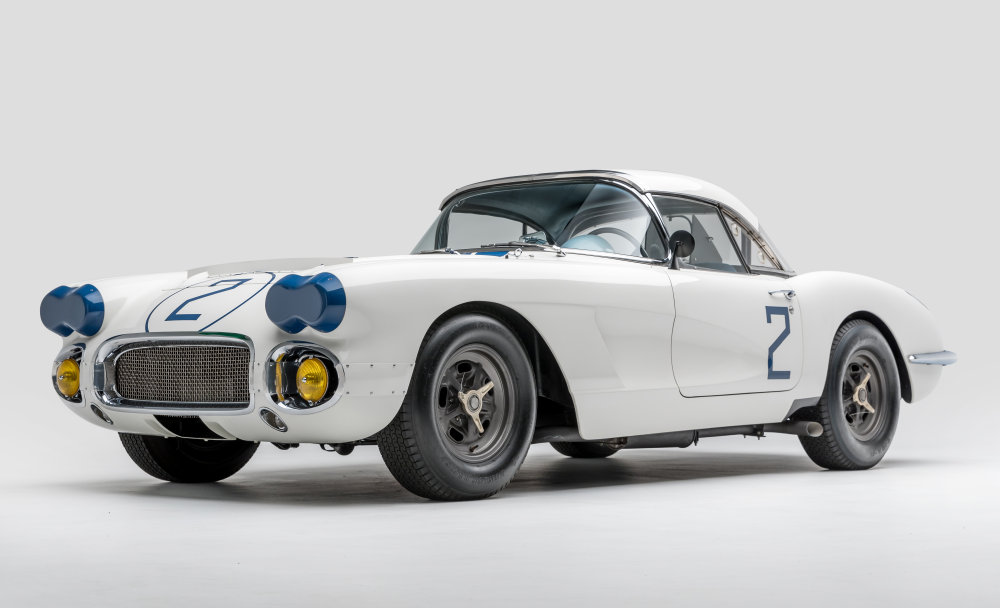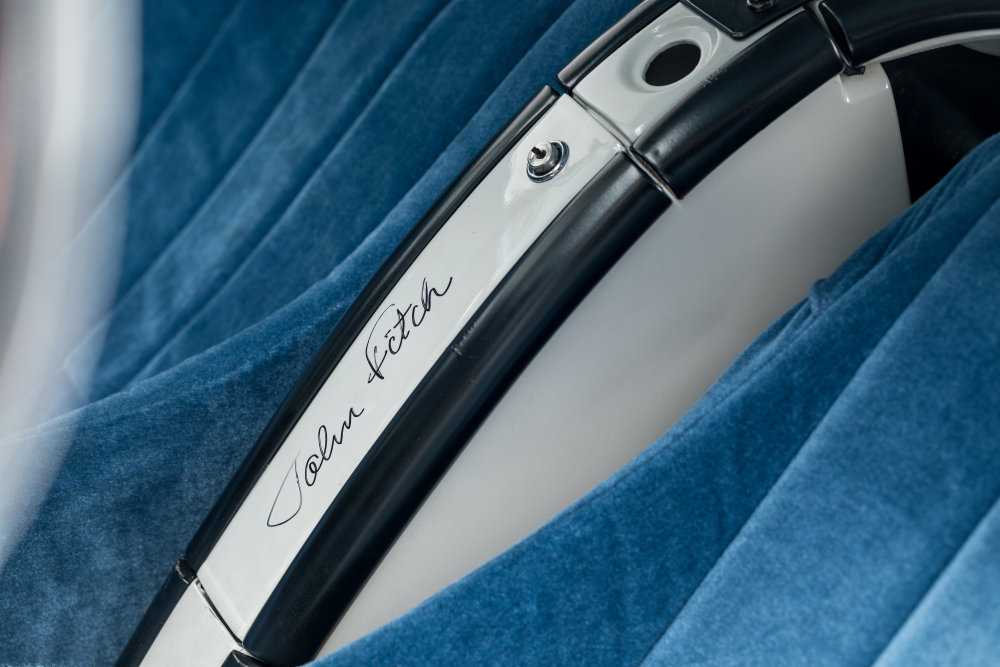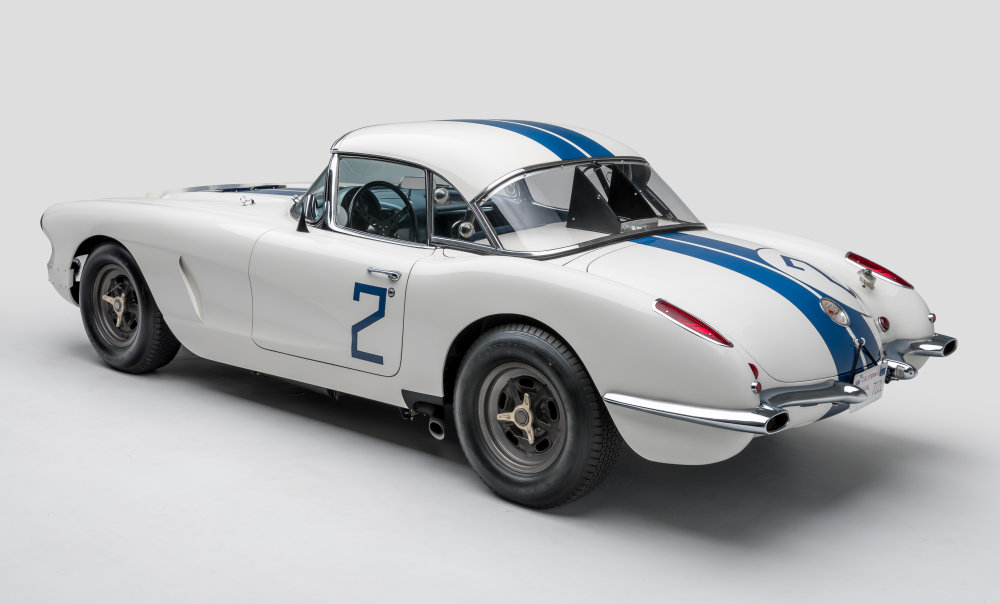One of the First Chevrolet Corvette LeMans Racers Comes to the Peterson Museum
Cunningham Corvette #2 didn’t win, but it played a key role in the first Chevrolet LeMans program.
The Chevrolet Corvette has an incredible history in the world of endurance racing, including a handful of wins at LeMans over the years. That racing success started shortly after the first Corvette was introduced in the 1950s, but it wouldn’t be until 1960 when Chevy’s sports car would win the 24-hour race. Teaming up with successful American racer Briggs Cunningham, Chevrolet sent three examples of the 1960 Corvette to LeMans and while two failed to finish, the third was the first to claim victory in Europe’s greatest road race.
The #2 car shown here played a key role in the development of the Cunningham LeMans team in 1960 before being sold from one collector to another through the 1990s, when Bruce Meyer added it to his collection. This 1960 Corvette is one of 10 race cars in the Peterson Automotive Museum’s newest display, titled “Winning Numbers: The First, The Fastest, The Famous,” giving attendees a chance to meet one of the cars that led to decades of Corvette racing success.
“Affectionately called ‘the car guy’s car guy,’ Bruce Meyer epitomizes true automotive passion,” said Petersen Automotive Museum Executive Director Terry L. Karges. “The charisma with which Bruce shares his passion is what sets him apart. ‘Winning Numbers’ reflects his discerning tastes as a collector and motorsports enthusiast, and we’re proud to share his fervor for the hobby with the community.”
Cunningham Corvettes
In the 1950s, Briggs Cunningham tried taking on the top sports cars from Europe in a customized Cadillac and a handful of his own custom-built race cars with Chrysler Hemi power before landing in a Jaguar. In the Jag, Cunningham found the success that had eluded him earlier on in his career and that success in Jaguar race cars caught the attention of General Motors engineer Zora Arkus-Duntov.
Duntov played a key role in the development and launch of the early Corvette and he pushed hard to get GM to back a LeMans run in 1956, but those efforts fell through. However, come 1959, he had convinced GM executives and Cunningham to give the Corvette a shot at LeMans.
Cunningham purchased three loaded Corvettes from Don Allen Chevrolet in Pennsylvania for just under $12,000, adding options like fuel injection, performance brake linings, quick-ratio steering, a four-speed manual transmission and a limited-slip rear differential.
The cars were then modified for racing, adding race-ready fuel system components including a 37-gallon tank, seats from a Douglas C-47 Skytrain military plane, stiffer springs than came from the factory and a handful of safety items including unique fasteners, aero bits and an access port for the fuel cell through the rear window.
Cunningham Corvette #2 was first tested in a race at Sebring, where it did well until the engine failed 41 laps in, followed by another hard test session at the old Bridgehampton circuit in New York. After these few tests, Cunningham and his teammates were confident that the Corvette was ready for LeMans, so they headed to France for the 1960 running of the 24 Hours of LeMans.
Corvettes at LeMans
The 1960 24 Hours of LeMans endurance race saw three Corvettes from Briggs Cunningham in the field, with the #1 car driven by Briggs Cunningham and Jim Kimberly, the #2 car driven by Dick Thompson and Fred Windridge and the #3 car was driven by John Fitch and Bob Grossman.
While the Corvette race cars were fast at LeMans, the #1 car was taken out of the race in a rollover accident and the #2 car was forced far back in the running due to a minor crash.
While the #2 Cunningham car was able to get back into the race after some simple repairs, it would eventually blow an engine late in the race. Fortunately, the #3 Corvette overcame overheating issues to win the class, finishing eighth overall.
That wasn’t good enough for Cunningham, who quickly parted ways with the Corvette program, selling off the assets including car #2.
This Corvette would change hands several times in the 30 years following the LeMans run, being painted and modified for street use until one of the owners had the car restored to its racing look. In the 1990s, Bruce Meyer bought the car and while he continues to race it at classic race car events, it is currently on display at the Peterson Automotive Museum in California.

